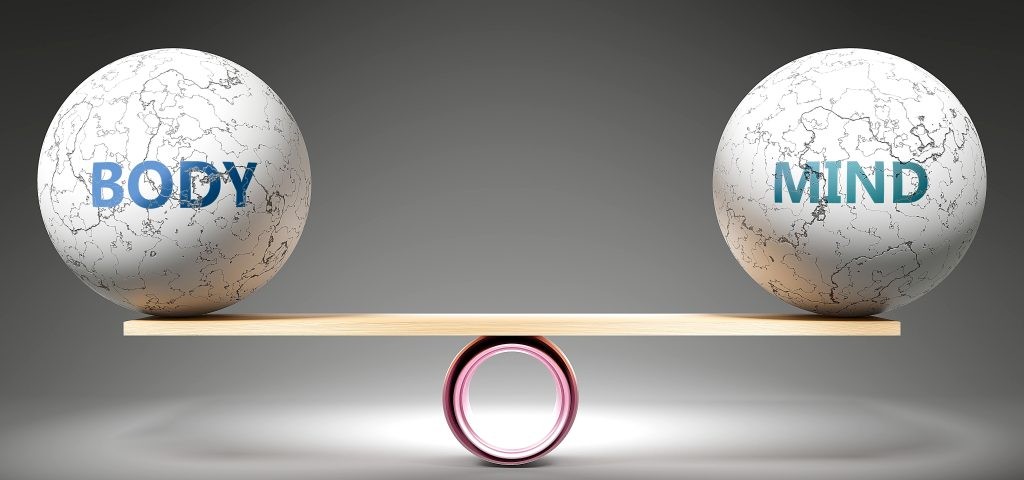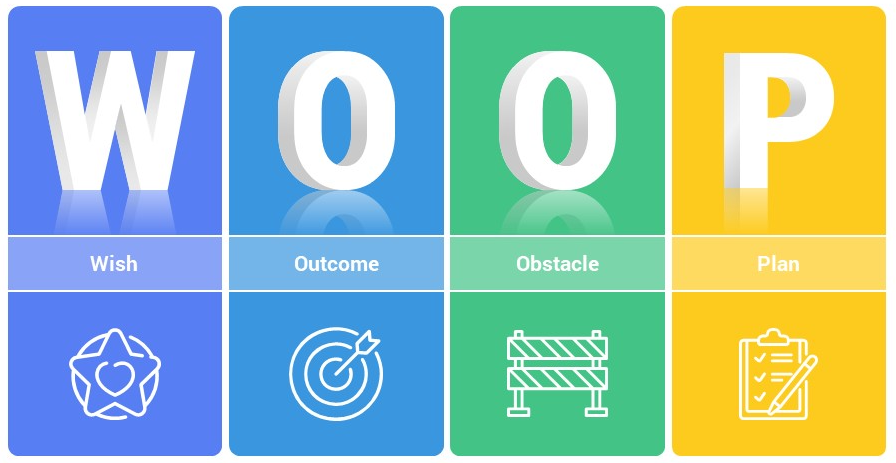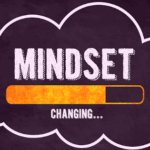Now Reading: The Power of The Mind: Unlocking Your Brain’s Full Potential
-
01
The Power of The Mind: Unlocking Your Brain’s Full Potential

The Power of The Mind: Unlocking Your Brain’s Full Potential
The human mind is perhaps our most remarkable yet underutilized resource. While technological advances continue to transform our world, the greatest frontier of potential remains within our own heads. Understanding and harnessing the power of your mind isn’t just about intelligence or memory—it’s about unlocking a more fulfilling, effective, and purposeful life.
It starts with the right biology of the brain (hardware). No matter how much we focus on mental health (software), it won’t make much of a difference if our brain isn’t functioning the right way. That’s why we must first address the right fuels for the brain. Sleep, Nutrition, and Movement impact our brain as much as our body.
In this comprehensive guide, we’ll explore the fascinating science behind neuroplasticity, practical mindfulness techniques, powerful visualization strategies, and the profound mind-body connection. By the end, you’ll have concrete tools to tap into more of your mind’s extraordinary potential—improving everything from your productivity and creativity to your health and happiness.
Understanding Your Brain’s Hardware
Before we dive into mental techniques, let’s examine the physical foundation that makes them possible. Your brain is an organ that requires proper care and maintenance to function optimally.
“The mind is not a vessel to be filled, but a fire to be kindled.”
— Plutarch
Sleep: Your Brain’s Essential Reset
Sleep isn’t just rest—it’s an active process critical for cognitive function. During sleep, your brain:
- Consolidates memories and learning from the day
- Clears out metabolic waste through the glymphatic system
- Regulates emotions and stress hormones
- Restores neural energy reserves
Research from the Sleep Foundation shows that even moderate sleep deprivation (6 hours or less per night) can impair cognitive performance equivalent to being legally drunk. For optimal brain function, adults should aim for 7-9 hours of quality sleep nightly.
Optimization tip: Create a consistent sleep schedule and a wind-down routine that signals to your brain it’s time to transition to rest. Limit blue light exposure from screens at least 60 minutes before bedtime, and keep your sleeping environment cool, dark, and quiet.
Nutrition: Feeding Your Neural Networks
Your brain consumes approximately 20% of your body’s energy despite comprising only 2% of your body weight. The quality of fuel you provide directly impacts cognitive function.
Key brain nutrients include:
- Omega-3 fatty acids (fatty fish, walnuts, flaxseeds) for neural membrane health
- Antioxidants (berries, dark chocolate, leafy greens) to combat oxidative stress
- B vitamins (whole grains, eggs, legumes) for energy metabolism and neurotransmitter production
- Choline (eggs, soybeans, meat) for memory and brain development
Dr. Lisa Mosconi, neuroscientist and author of “Brain Food,” emphasizes: “The foods you eat directly affect how your brain performs. A Mediterranean-style diet rich in plant foods, healthy fats, and lean proteins consistently shows benefits for brain health across the lifespan.”
Movement: Physical Activity for Mental Clarity
Exercise isn’t just for your body—it’s a powerful brain enhancer that:
- Increases blood flow to the brain, delivering more oxygen and nutrients
- Stimulates the production of BDNF (brain-derived neurotrophic factor), which supports neuroplasticity
- Reduces inflammation and oxidative stress
- Improves mood through endorphin release
A landmark study in the journal Neurology found that regular aerobic exercise increased hippocampal volume by 2% in older adults, effectively reversing age-related brain shrinkage by 1-2 years.
Practical application: Even short bursts of movement matter. A 10-minute walk can immediately boost cognitive function and creativity. Aim for at least 150 minutes of moderate activity weekly, combining cardiovascular exercise with strength training for optimal brain benefits.
The Science of Neuroplasticity
How Your Brain Rewires Itself
Neuroplasticity—your brain’s ability to reorganize itself by forming new neural connections—is the biological foundation for learning, adaptation, and resilience. This remarkable capacity continues throughout your entire life, though it’s most pronounced during childhood.
Every time you learn something new, form a habit, or have a novel experience, your brain physically changes. Neurons that “fire together, wire together,” strengthening pathways that are frequently used while pruning those that aren’t.
Dr. Norman Doidge, author of “The Brain That Changes Itself,” explains: “The plastic paradox is that the same neuroplasticity which allows us to change our brains and produce more flexible behaviors is also the source of rigidity… Practicing the wrong thing leads to becoming an expert at doing the wrong thing.”
Practical Applications of Neuroplasticity
To harness neuroplasticity for positive change:
- Embrace challenges: Difficult tasks create stronger neural pathways than easy ones.
- Practice deliberately: Focused, intentional practice with feedback is more effective than mindless repetition.
- Learn new skills: Novel activities force your brain to create entirely new neural networks.
- Cross-train your brain: Combine physical and mental activities for enhanced effects—like learning a language while walking.
- Rest and recover: Alternating periods of intense focus with rest optimizes learning and memory consolidation.
Research from the University of California found that learning a new skill that challenges multiple brain functions (like digital photography or quilting) was more effective at improving cognitive function in older adults than activities requiring less active engagement.
Mindfulness: Training Your Attention Muscle

The Research Behind Mindfulness
In our distraction-saturated world, the ability to direct and sustain attention is increasingly valuable. Mindfulness—paying attention to the present moment with openness and without judgment—trains this essential capacity.
An extensive body of research demonstrates that regular mindfulness practice:
- Increases gray matter density in regions associated with attention, learning, and memory
- Reduces activity in the default mode network (associated with mind-wandering and rumination)
- Improves working memory and cognitive flexibility
- Enhances emotional regulation and stress management
A meta-analysis published in JAMA Internal Medicine reviewed 47 trials with 3,515 participants and found moderate evidence for mindfulness improving anxiety, depression, and pain, and small to moderate evidence for improving stress and quality of life.
Simple Mindfulness Practices for Beginners
You don’t need hours of meditation to benefit from mindfulness. Start with these accessible practices:
Focused Attention Practice (5 minutes)
- Sit comfortably with your back straight and eyes closed or softly focused.
- Direct your attention to your breath—the sensation of air moving in and out of your body.
- When your mind wanders (which it will), gently bring your attention back to your breath.
- Continue this process of noticing when your attention has wandered and returning to your breath.
Body Scan (10 minutes)
- Lie down or sit comfortably.
- Systematically bring attention to different parts of your body, from your toes to the top of your head.
- Notice any sensations without trying to change them.
- If your mind wanders, gently return your focus to the body part you were exploring.
Mindful Walking (Any duration)
- Walk at a normal or slightly slower pace.
- Pay attention to the sensations of walking—your feet touching the ground, your weight shifting, your balance.
- When your mind wanders, bring your attention back to the physical experience of walking.
The key isn’t maintaining perfect focus (which is impossible) but noticing when your attention has wandered and gently bringing it back. This mental “return” is what strengthens your attention control like a muscle.
Visualization Techniques for Peak Performance
Why Mental Rehearsal Works
Visualization isn’t just positive thinking—it’s a scientifically validated technique used by elite performers across domains. When you vividly imagine an action, you activate many of the same neural pathways used during actual performance.
Research using functional MRI scans shows that mental imagery activates almost identical brain regions as physical practice. This is why:
- Olympic athletes spend up to several hours daily in mental rehearsal
- Surgeons who mentally practice procedures make fewer errors
- Musicians who visualize performances show improved technical execution
A meta-analysis in the Journal of Sports Science & Medicine found that mental practice alone produced about one-third the benefits of physical practice, and combining both yielded the strongest results.
How to Create Effective Visualizations
For maximum impact, follow these principles:
- Engage multiple senses: See the details, hear the sounds, feel the physical sensations, and even imagine relevant smells or tastes.
- Include emotion: Experience the confidence, determination, or joy that would accompany successful performance.
- Embrace obstacles: Rather than visualizing only perfect execution, imagine overcoming challenges successfully.
- Practice from both perspectives: Alternate between seeing yourself from the outside (third-person) and experiencing the activity from within your body (first-person).
- Be consistent: Brief daily visualization sessions (5-10 minutes) are more effective than occasional longer sessions.
Sample visualization exercise for public speaking: Imagine yourself standing confidently at the podium. Feel your feet planted firmly on the ground. See the audience engaged with your message. Hear your voice projecting clearly. Notice the room temperature and lighting. Visualize handling a difficult question with poise. Feel the satisfaction of connecting deeply with your audience.
The Mind-Body Connection

How Thoughts Affect Physical Health
The separation between mind and body is increasingly recognized as artificial. Your thoughts, emotions, and beliefs directly influence your physical health through multiple pathways:
- Immune function: Chronic stress suppresses immune activity, while positive psychological states enhance it.
- Inflammation: Negative thought patterns increase inflammatory markers associated with numerous diseases.
- Hormone regulation: Mental states affect cortisol, adrenaline, oxytocin, and other hormones that impact every body system.
- Autonomic nervous system: Thoughts immediately influence heart rate, blood pressure, digestion, and more through sympathetic and parasympathetic activation.
A groundbreaking study in the journal Health Psychology found that hotel housekeepers who were informed about how their work constituted good exercise showed significant improvements in weight, blood pressure, and body fat compared to a control group doing identical work but without this mindset shift.
Harnessing the Placebo Effect
The placebo effect—improvements in health from believing in a treatment rather than from the treatment itself—demonstrates the power of expectation on physical outcomes. Far from being “all in your head,” placebo responses create measurable biological changes:
- Release of endorphins and dopamine
- Reduced inflammation
- Altered brain activity patterns
- Changes in autonomic nervous system functioning
Dr. Alia Crum of Stanford University has pioneered research showing how mindsets about stress, exercise, and food significantly affect physiological outcomes. In one study, participants who viewed a milkshake as a “sensible shake” had different hormonal responses than when they viewed the identical shake as an “indulgent dessert.”
Practical application: While maintaining medical treatment, cultivate healing beliefs by:
- Focusing on positive health outcomes rather than worst-case scenarios
- Emphasizing what treatments can do rather than limitations
- Using affirmations supported by evidence (e.g., “My body has remarkable healing capabilities”)
- Surrounding yourself with recovery stories and positive health models
Advanced Mental Performance Techniques
The WOOP Method for Goal Achievement

Developed by psychologist Gabriele Oettingen, Mental Contrasting with Implementation Intentions (MCII)—or WOOP (Wish, Outcome, Obstacle, Plan)—is a research-backed technique that outperforms both positive thinking and negative thinking for goal achievement.
How to practice WOOP:
- Wish: Identify a meaningful, challenging but feasible goal. Be specific and concise. Example: “I want to complete the first draft of my project proposal by Friday.”
- Outcome: Vividly imagine the best outcome of achieving this goal. How will you feel? What benefits will it bring? Engage all your senses in this visualization for 30-60 seconds. Example: Imagine the satisfaction of having the draft done, the reduced stress, and the pride in meeting your deadline.
- Obstacle: Identify the main internal obstacle standing in your way. What within you might prevent success? Example: “I tend to get distracted by email and social media notifications while writing.”
- Plan: Create an if-then statement: “If [obstacle occurs], then I will [specific action].” Example: “If I feel the urge to check notifications, then I will immediately put my phone in another room and activate a website blocker for 25 minutes.”
Studies show that WOOP increases goal attainment by up to 200% compared to other mental techniques, likely because it combines motivation (through outcome visualization) with realistic preparation (through obstacle anticipation).
Cognitive Reframing
Cognitive reframing is the practice of deliberately changing how you interpret situations. Since your emotional responses and behaviors stem from your interpretations rather than events themselves, this technique gives you greater control over your reactions.
Steps for effective cognitive reframing:
- Notice your automatic interpretation: When facing a challenge, identify your immediate thoughts about it. Example: “My presentation was terrible. I’m not cut out for public speaking.”
- Examine the evidence: Look for facts that either support or contradict this interpretation. Example: “I stumbled over one section, but several people asked engaged questions and my supervisor said it was informative.”
- Consider alternative perspectives: How might someone else view this situation? Example: “Most people are nervous during presentations. My colleagues probably noticed my passion for the topic more than my nervousness.”
- Create a balanced thought: Develop an interpretation that acknowledges both challenges and positives. Example: “While I still have room to improve my delivery, I successfully communicated my main points and engaged the audience.”
Research from cognitive-behavioral therapy shows that regularly practicing cognitive reframing reduces stress, anxiety, and depression while increasing resilience and problem-solving abilities.
Conclusion: Your Mind as Your Greatest Asset
In an era increasingly dominated by artificial intelligence and automation, our uniquely human mental capacities—creativity, empathy, wisdom, and insight—become ever more valuable. The power of your mind extends far beyond productivity or performance; it shapes your health, relationships, and sense of meaning.
The journey to understanding and harnessing your mental power is ongoing. Like physical fitness, mental fitness requires consistent practice and attention. But unlike material assets, your mental capabilities can continue to grow throughout your lifetime, offering compounding returns on your investment of time and effort.
As philosopher William James once observed, “The greatest discovery of my generation is that human beings can alter their lives by altering their attitudes of mind.” Modern neuroscience has confirmed this intuition, giving us practical tools to shape our thoughts, focus our attention, and ultimately transform our experience of life.
By tending to both your brain’s hardware through proper sleep, nutrition, and movement, and optimizing your mental software through techniques like mindfulness, visualization, and cognitive reframing, you unlock more of your innate potential. In doing so, you become not just more productive or successful, but more fully human.
FAQs About Mental Power
Can neuroplasticity really help adults learn new skills?
Absolutely. While neuroplasticity is most pronounced during childhood, research conclusively shows that healthy adults of all ages retain the ability to form new neural connections. The key is consistent, focused practice that pushes beyond your comfort zone.
How long does it take to see benefits from mindfulness practice?
Some benefits, like reduced stress and improved focus, can appear after just a few days of consistent practice. More profound changes, such as increased gray matter density in attention regions, typically require 8-12 weeks of regular practice.
Is visualization just a form of wishful thinking?
No. Unlike positive thinking or wishful thinking, effective visualization activates specific neural pathways involved in actual performance. The key difference is the level of sensory detail, emotional engagement, and mental rehearsal of specific behaviors rather than just outcomes.
How can I find time for mental training with my busy schedule?
Many effective mental techniques require just 5-10 minutes daily. Consider integrating them into existing routines—practice mindfulness during your morning coffee, use visualization during your commute, or try cognitive reframing just before bed.
Can mental techniques replace medication for conditions like anxiety or depression?
For mild to moderate conditions, techniques like mindfulness meditation have shown comparable efficacy to medication in some studies. However, for severe conditions, mental training works best as a complement to appropriate medical treatment, not a replacement. Always consult healthcare providers about treatment options.
This article is for informational purposes only and is not a substitute for professional medical advice. Always consult qualified healthcare providers regarding health concerns.




















